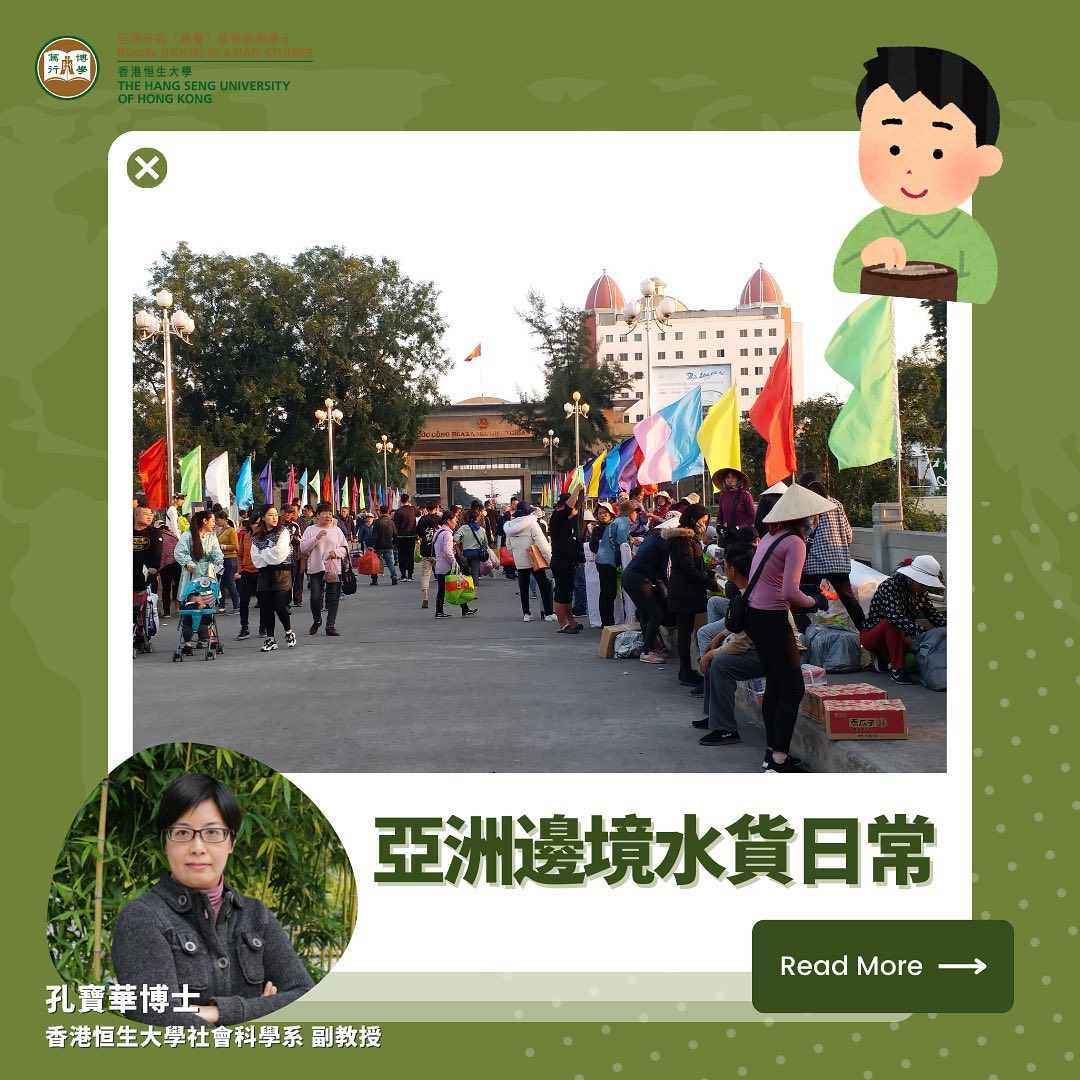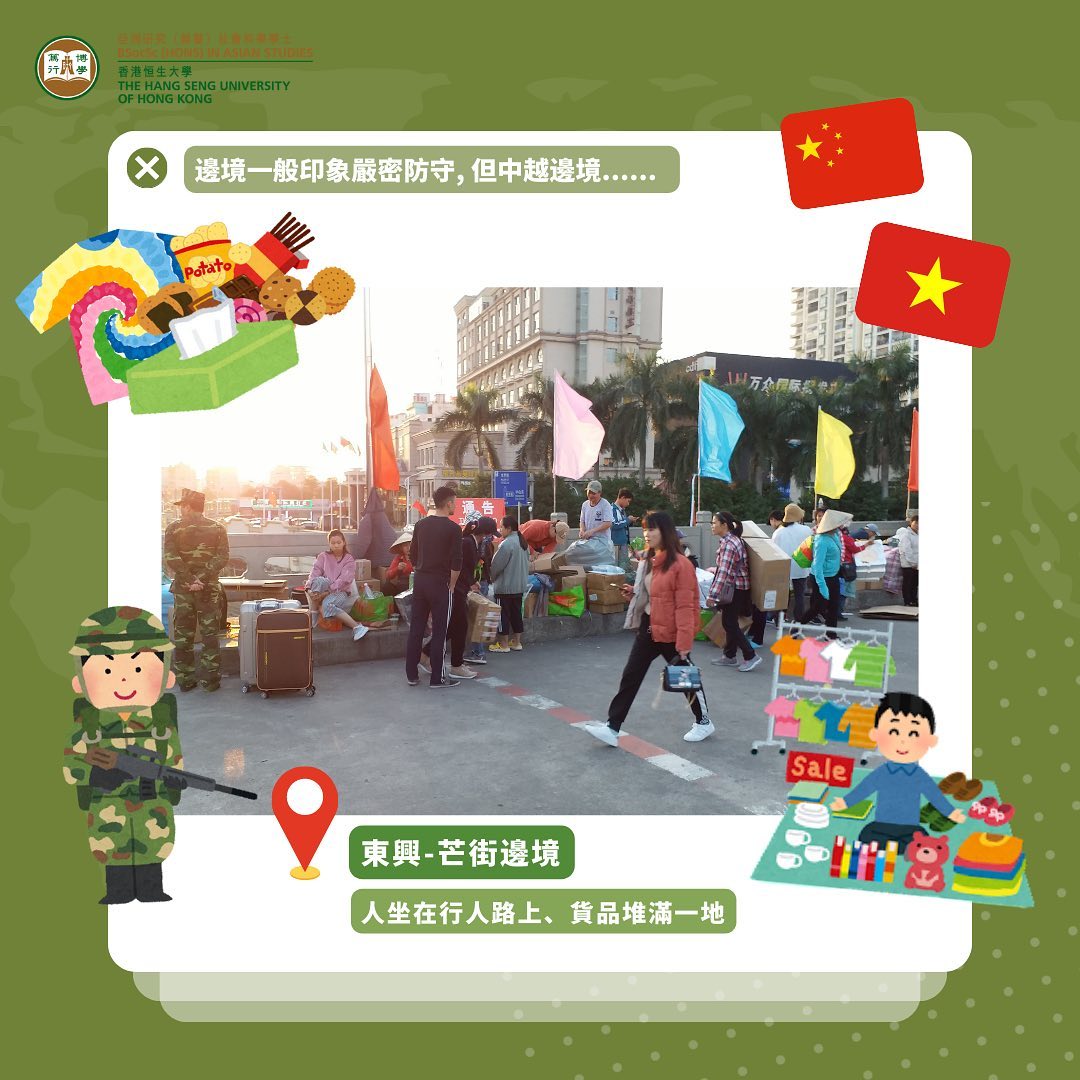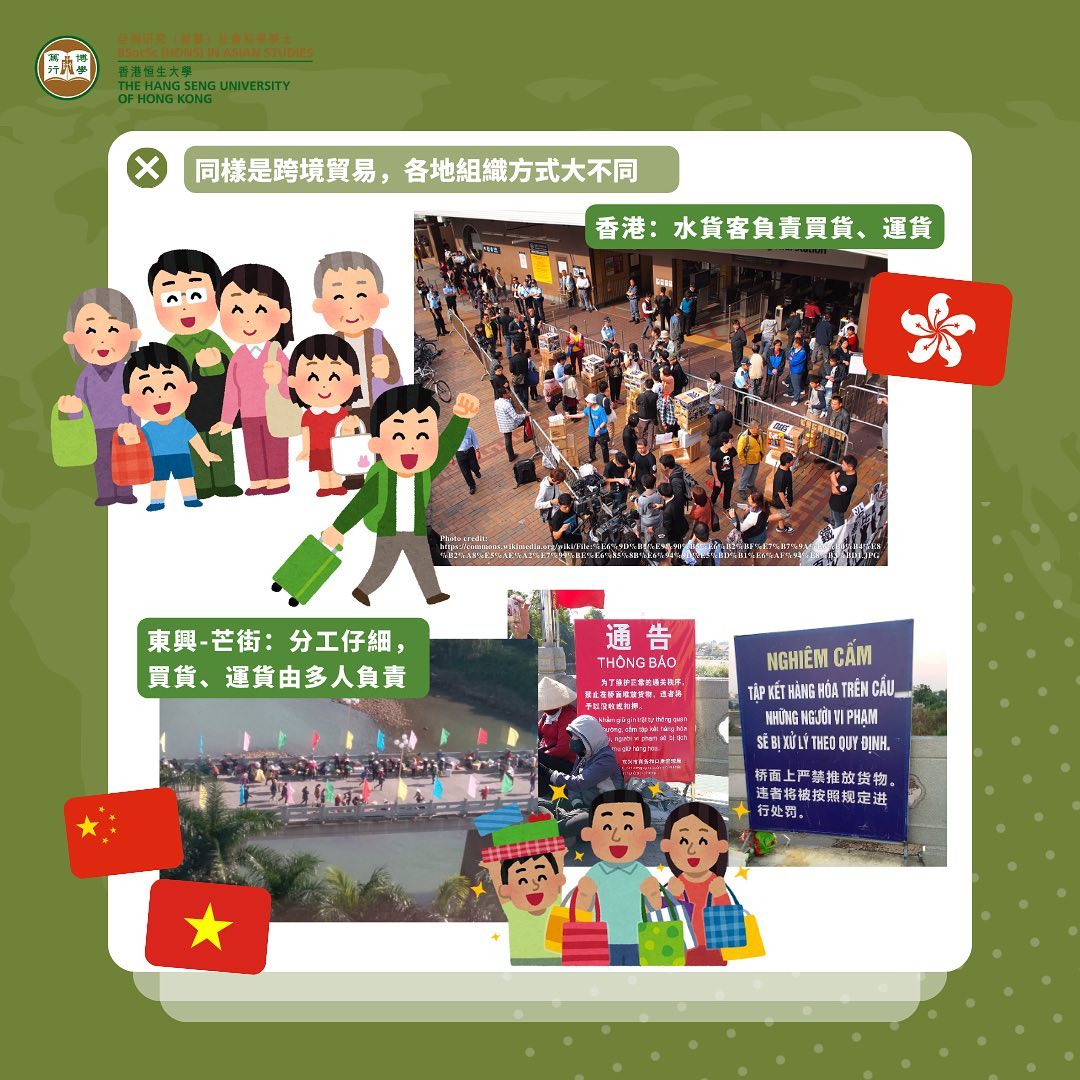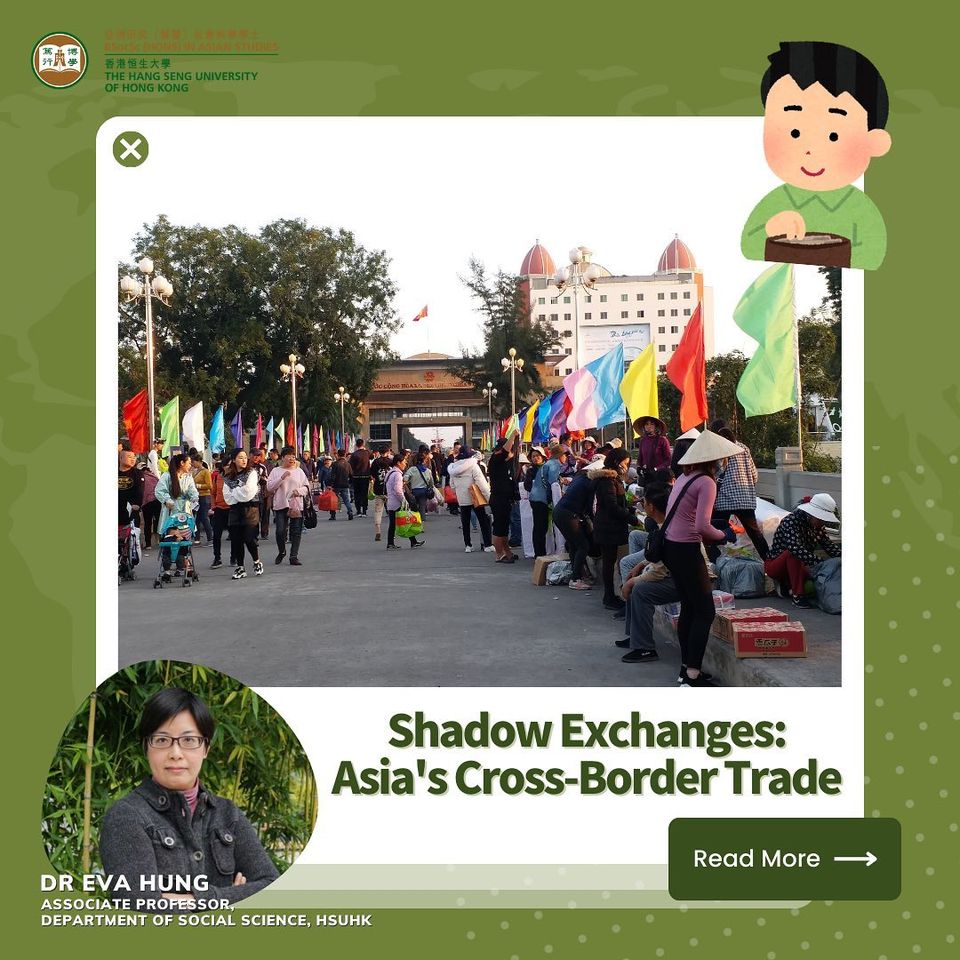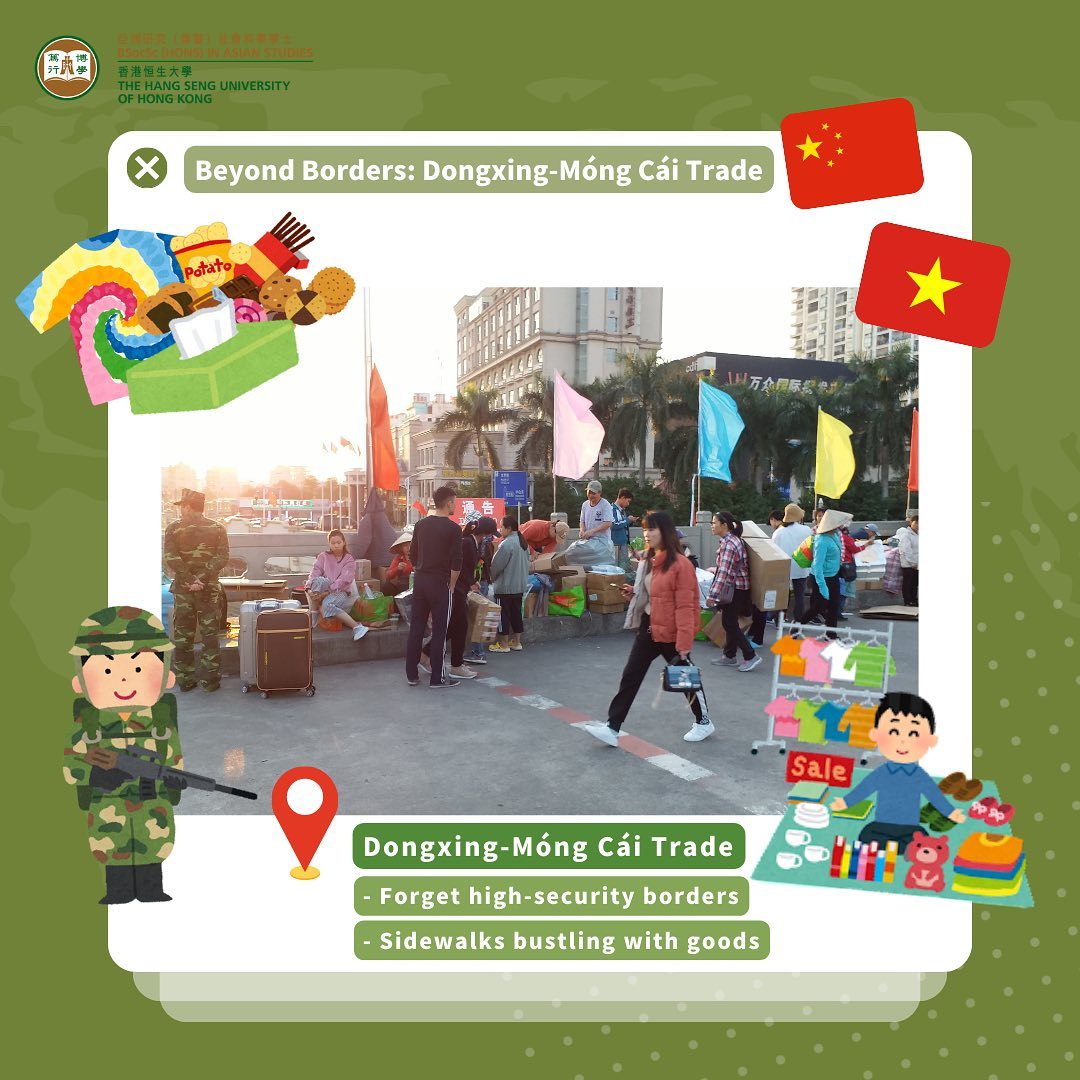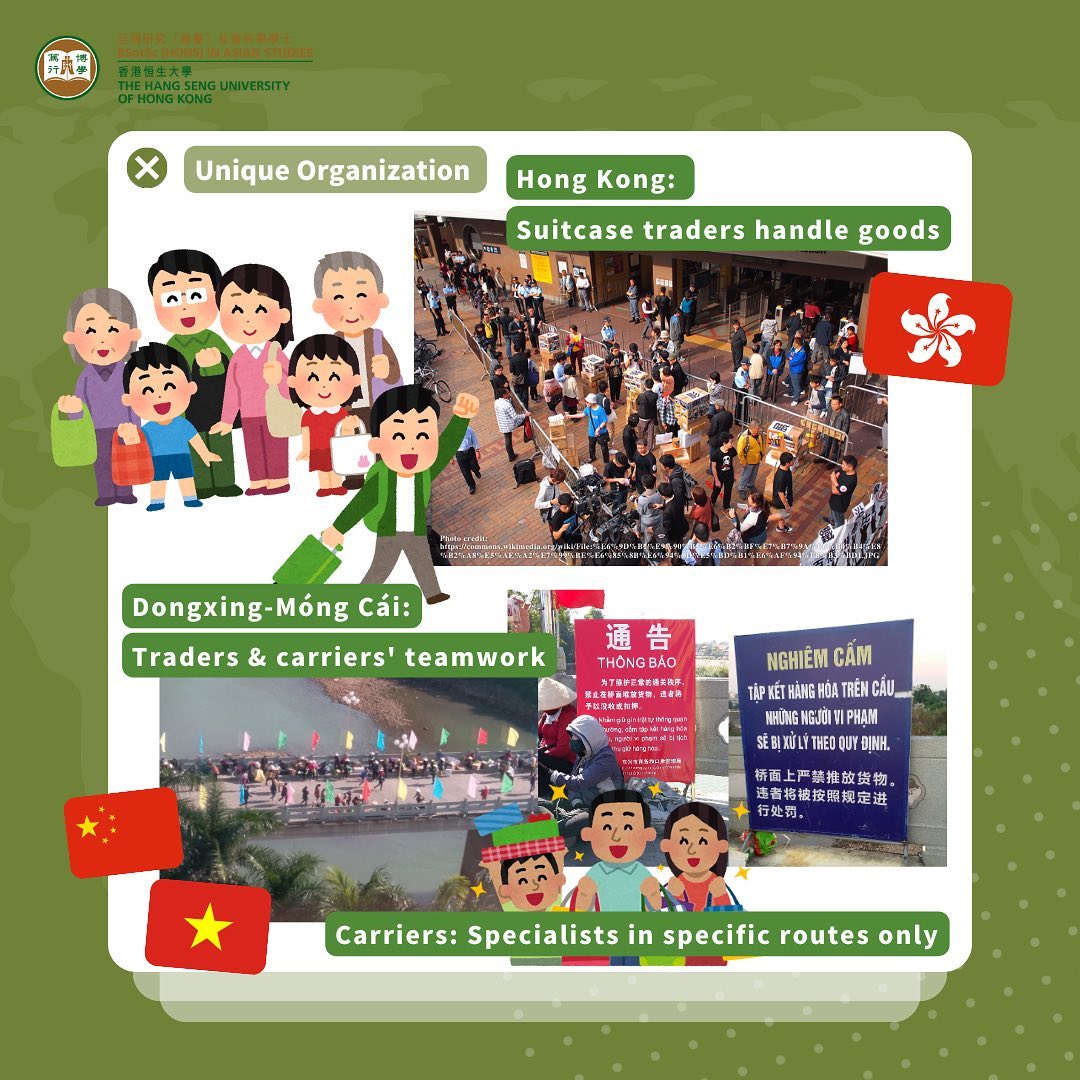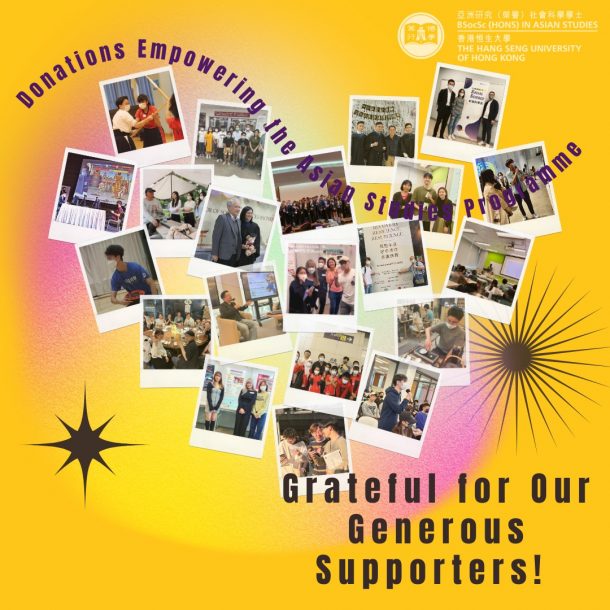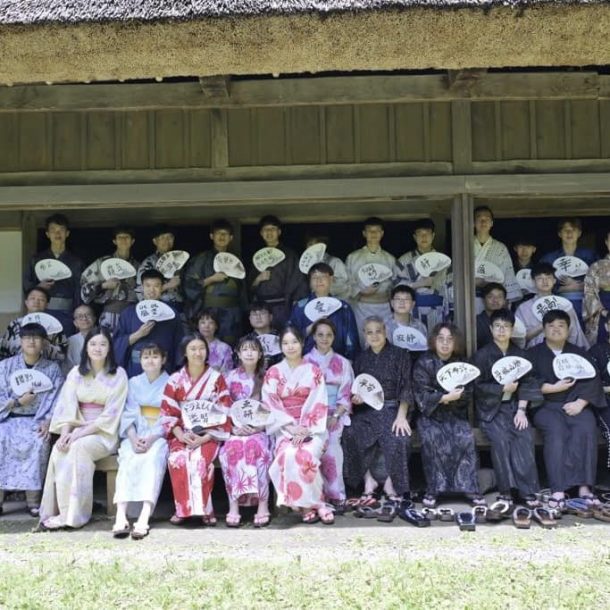
孔寶華博士的研究地域範圍集中在亞洲尤其是中國及其周邊國家,近年她的研究項目主要是跨邊境的「走水貨」活動,希望從中理解「影子經濟」的發展和運作。2019年12月,她實地考察了中國與越南之間的東興—芒街邊境口岸,觀察了不一樣的「螞蟻搬家」活動。我們常常以為邊境國界一定是個嚴密防守的區域,會有大量軍事人員駐守,但東興—芒街口岸卻打破了這種刻板的想像!在連接兩地的行人橋上,人們隨意坐著,周圍堆滿了各式各樣的商品,包括衛生紙、零食、毯子、衣物、甚至是文件夾等等。他們都在做什麼呢?原來是在等待合適的人在最佳時機來提取貨物運回兩地。
這種走水貨的組織與我們在香港所見的很不一樣。在香港,水貨客會拖著行李箱自己購買和攜帶商品來回穿梭香港與深圳。但在東興—芒街的邊境口岸,我們見到中國的水貨商將貨物卸到行人橋上,未有入境越南就返回東興。越南的水貨客接著拿起少量貨物,同樣不會過境到中國;甚至乎,越南走水的勞動分工異常複雜,每個水客只負責特定路線,例如只徘徊在行人橋和入境大堂之間,把貨物交予另一人排隊邊檢入境,然後再送至另一人將物品運到芒街的集貨點。
孔博士的研究展示了亞洲跨邊境走水貨多樣的組織性,而社會研究方法中的民族誌田野調查則讓我們親身觀察到這些活動的相似之處以及獨特差異。深入亞洲研究的世界,揭開更多你可能不知道的亞洲面貌!
#亞洲研究 #走水貨 #中越邊境 #平行貿易
Dr. Eva Hung, an expert in Contemporary China and Asian Studies, shares her fascinating experience at the Dongxing-Móng Cái border crossing between China and Vietnam.
Forget what you know about heavily guarded national borders; the Dongxing-Móng Cái border defies this imagery! Here, people sit on the sidewalks, surrounded by various goods – toilet paper, snacks, blankets, clothes, and more. They patiently wait for the right person to collect their goods at the perfect moment.
This cross-border trade differs from the parallel trade in Hong Kong, where suitcase traders buy and carry goods themselves. At the Dongxing-Móng Cái border, Chinese traders unload their goods on a footbridge and return to their side. Vietnamese traders then pick up small amounts of goods and go back to Vietnam. Even the Vietnamese carriers don’t take the items all the way to Mong Cai. A complex division of labor is in place, with carriers responsible for specific routes only.
This eye-opening example from Dr. Eva Hung’s research demonstrates the diverse organization of cross-border trade in Asia. Ethnographic fieldwork allows us to appreciate both similarities and unique differences in these activities. Dive into the world of Asian Studies and uncover more intriguing aspects of Asia that you might not know!
#AsianStudies #CrossBorderTrade #ChinaVietnamBorder


